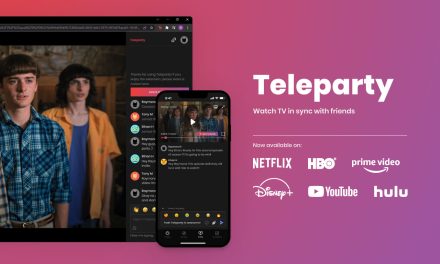
Is VHS essential to the study of television? This is a debate I’m currently engaged in with the institution I work for which desires to ‘upgrade’ the audio-visual facilities in teaching rooms and sees the removal of VHS as part of this. This upgrade would result in all rooms having DVD and Blu-ray players, but video would be gone; this follows in the footsteps of our library, which threw out all its VHS cassettes a year or so ago (thankfully, our department gave home to some of them, though not many). Many in our department do not want VHS facilities to be removed from the spaces we use; I’ve mentioned this kerfuffle to colleagues in other universities in the UK and found that similar situations are occurring across the country.
What’s interesting about this is that at the core this debate is conflicting assumptions about what television is, and what you need to teach it. For our audio-visual department VHS is a ‘dead’ technology, which has been superseded by more preferable formats. One of the problems, we’re told, in keeping VHS is the difficulty in sourcing players, and the even more problematic issue of finding spare parts for the technology when it needs fixing. Yet I don’t want to suggest that our university sees this debate as one that is purely about practical factors; it is instead assumed that students – and by extension staff – want newer forms of technology, and that the qualities that DVD offer will help us teach better. What this means is that when we meet to discuss this issue I have to spend quite some time explaining exactly what it is that we do, and what we want from the technology that supports us in doing so. The mismatch between how and what we teach, and how and what it is assumed we teach by other parts of our institution seem emblematic of a wider misapprehension of Television Studies as a discipline.
Firstly, we’re not a department that has much interest in the quality of the television image. Or, to be more precise, we’re interested in debates about why some kinds of television are perceived to be of more quality than others, but inviting students to marvel at aesthetics and imagery – in a manner to an appreciation class – is not something we see as our remit. Indeed, I think that, like much of the field, we’re quite keen to revel in that which is seen as low quality, as trash, as not worth studying, which is why we have classes on things like celebrity and comedy.
Secondly – and perhaps more importantly – the loss of VHS players will render redundant banks of material recorded off broadcast television that we have built up over many years. I’m commonly met with faces of incomprehension when I say that what we want to show in class is material taped from broadcast, replete with announcers talking over credits, and idents and all the other stuff that joins programmes together. It’s presumed that the clear, ‘clean’ DVD version of a programme is more ‘suitable’ for the classroom experience, which says something about assumptions of what should and should not darken the undergraduate experience. That some of our material looks pretty grotty in aesthetic  terms is perhaps the point, as the television image was and remains pretty poor (newer forms of technology might shout about an improved image, and this is true up to a point, but it’s the case that many people continue to consume telly on sets at odds with the technology that was used to make it, resulting in black bars at edges of screens, speakers unable to deal with complex soundscapes, and images broken up mid-broadcast thanks to glitches in television cables and satellite dishes). Why should the class experience be about imagery that’s all shiny and new when this results in something that is not anything like television as it is commonly lived?
terms is perhaps the point, as the television image was and remains pretty poor (newer forms of technology might shout about an improved image, and this is true up to a point, but it’s the case that many people continue to consume telly on sets at odds with the technology that was used to make it, resulting in black bars at edges of screens, speakers unable to deal with complex soundscapes, and images broken up mid-broadcast thanks to glitches in television cables and satellite dishes). Why should the class experience be about imagery that’s all shiny and new when this results in something that is not anything like television as it is commonly lived?
Finally, we’re often told that DVD and Blu-ray are not a problem because all television is now available in those formats, so nothing will be lost. Of course, we know this is not the case; the vast majority of television cannot be bought on a disc, unless someone knows of a box set that I’ve not come across that contains every single one of the hundreds of episodes of The One Show. We could, of course, spend hours transferring all this material onto DVDs, but this seems a rather long-winded endeavour which will result in the supposedly superior format being used to play images of a significantly inferior quality.
Oh, and VHS is infinitely easier and quicker to cue up in the right place (as anyone who’s sat waiting at a conference presentation while a speaker attempts to cue up a DVD after the disc has dawdled its weary way through its loading screens will know).
This is not intended as a paean to VHS, or a Luddite rejection of new forms of technology. Indeed, one of the interesting things about telly is the multiple formats it exists upon, and the problems broadcasters have in negotiating all of these (as our colleague Keith Johnston has pointed out for 3D TV, which has to be filmed for that format and in 2D too, for the vast majority of people who will consume it in the latter). VHS will, at some point, really, properly, utterly die (perhaps). But this desire to retain VHS is instead an acknowledgement of both the range of stuff Television Studies covers, and the ways in which these can conflict with institutions’ desires to be seen to be up-to-date with its technology. Is TV still VHS? The piles of tapes (slowly rotting) on our office shelves is an archive of broadcasting, and something significant is lost when we presume a format is no more.
Brett Mills is Head of the School of Film, Television and Media Studies at the University of East Anglia. He’s currently undertaking the 3-year AHRC-funded research project ‘Make Me Laugh: Creativity in the British Television Comedy Industry’ (www.makemelaugh.org.uk).





